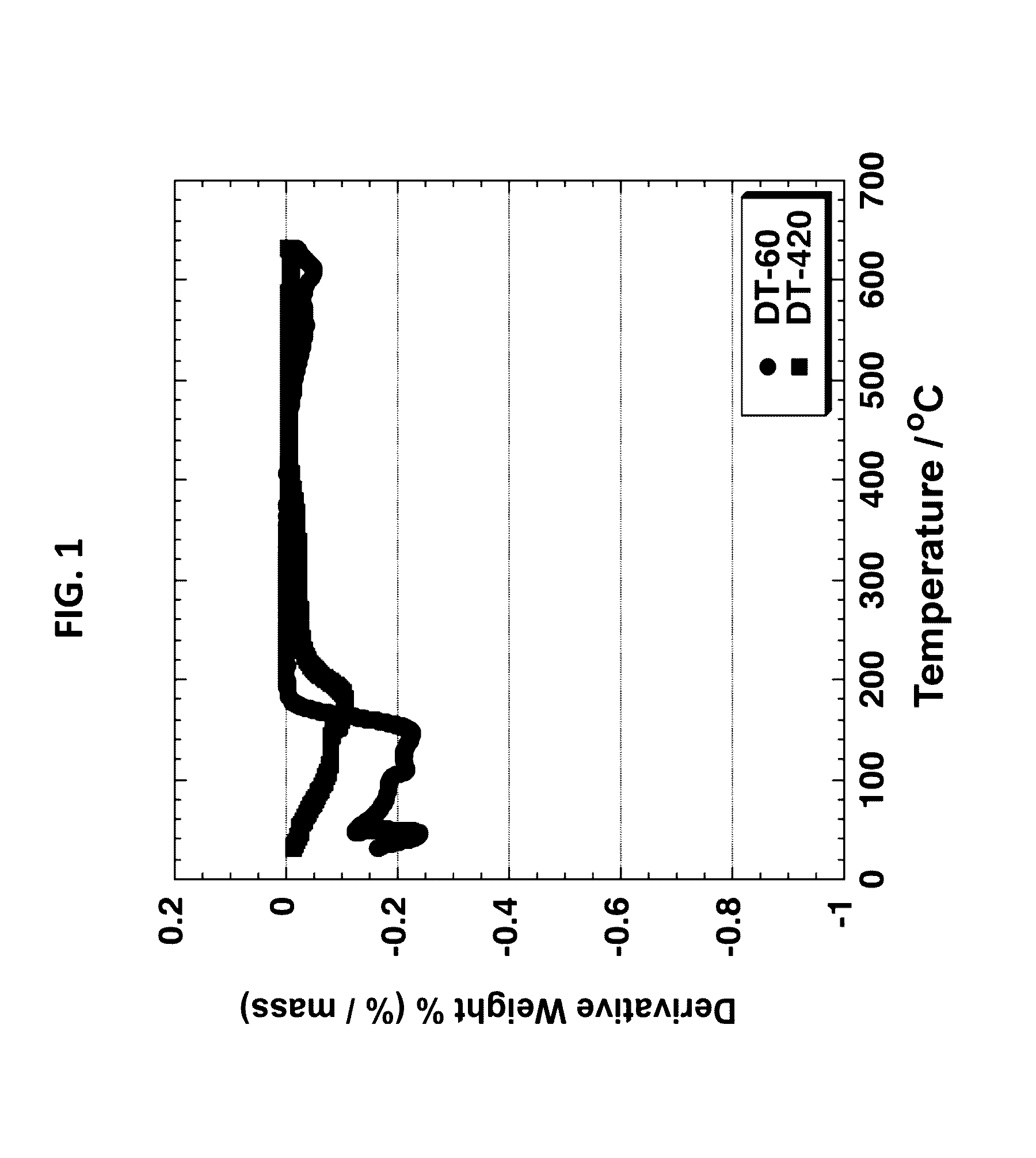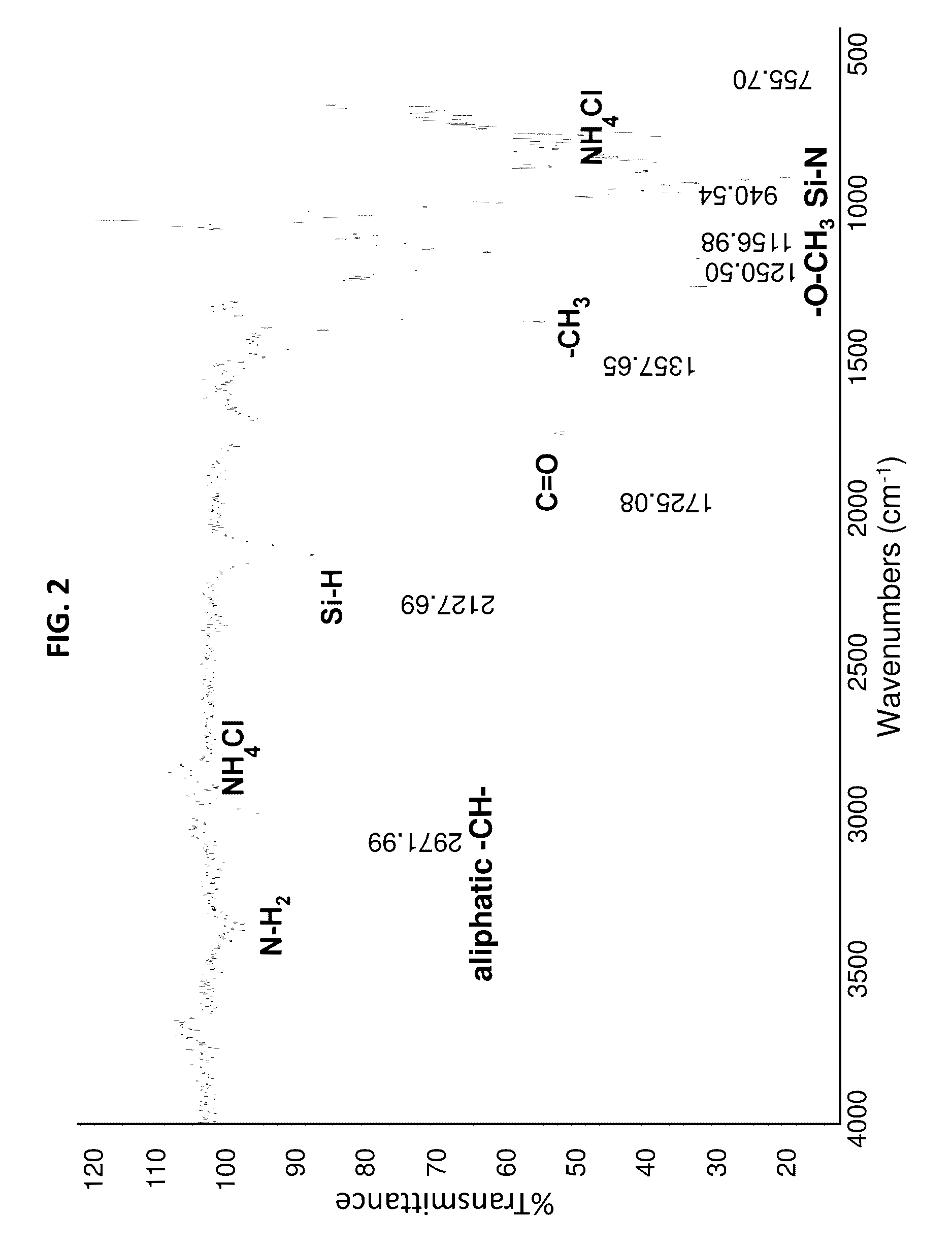High performance silicon based coating compositions
a technology of silicon based coating and composition, applied in the direction of radiation-absorbing paint, electric conductive paint, coating, etc., can solve the problems of limited application, limited availability of finished products, limited use of finished products, etc., to achieve extended usable coverage, high pressure, and/or high temperature without sacrificing extreme release properties.
- Summary
- Abstract
- Description
- Claims
- Application Information
AI Technical Summary
Benefits of technology
Problems solved by technology
Method used
Image
Examples
example 1
Preparation of Resin Systems for Making Silicon-Based Coating Compositions
[0101]The silicon-based coating formulations provided herein were formed from two or more different resin systems chosen from, what was known as A-Resin, B-Resin, C-Resin, and any combinations thereof. The A-Resin was made according to the formulation provided in Table 1. The A-Resin was purchased from KiON Defense Technologies (Huntingdon Valley, Pa.), and it was sold as KDT HTA® 1500 Fast™, an air curable liquid polysilazane based coating resin (8.9 lbs / Gallon).
[0102]
TABLE 1A-Resin formulationIngredientCAS NO.Amount (w / w) Appx.PolysilazaneCAS# 475645-84-2CyclosilazaneCAS# 503590-70-3 n-Butyl acetateCAS# 123-86-4 (or tert-Butyl acetate)(CAS# 540-88-5)PolysiloxaneCAS# 9011-19-2
[0103]The B-Resin was made according to the formulation provided in Table 2. The B-Resin was purchased from Genesee Polymers Corp. (Burton, Mich.), and it was sold as Dimethyl Silicone Fluids G-10 products (8.0 lbs / Gallon).
[0104]
TABLE 2B...
example 2
Mold Release Coat Formulation DT-6025
[0109]A mold release silicon-based coating formulation was made according to the formulation provided in Table 4. The base resin mixture of this particular mold release coat was formed by mixing the A-, B- and C-Resins in the amount listed below. The formulation was to be used to coat the face of a porous composite mold surface.
[0110]
TABLE 4Mold Release Silicon-Based Coating DT-6025 CompositionINGREDIENTAMOUNT (w / w)1. Base Resin MixtureA-Resin:8% (w / w)B-Resin:8% (w / w)C-Resin:73% (w / w) 2. Solventtert-Butyl AcetateCAS# 540-88-56% (w / w)High-purity Synthetic5% (w / w)Isoparaffin (Isopar ™-G)Total = 100% (w / w)
[0111]To prepare 10 gallons of DT-6025 coating composition, B-Resin and C-Resin were separately agitated, then 0.8 gallons B-Resin were mixed with 7.3 gallons C-Resin blended using a mix paddle for a few minutes to obtain a uniform mixture. Since both the B- and C-Resin were very fluid, no extreme agitation was required. Next, 0.8 gallons of A-Resi...
example 3
Mold Release Coating Formulation DT-6060
[0113]A mold release silicon-based coating formulation was made according to the formulation provided in Table 5. The mold release coat was formed by mixing the B- and C-Resins in the amount listed below. The formulation was to be used to coat the face of a metal mold surface.
[0114]
TABLE 5Mold Release Silicon-Based Coating DT-6060 CompositionINGREDIENTAMOUNT (w / w)1. Base Resin MixtureB-Resin:50% (w / w)C-Resin:50% (w / w)2. Solventtert-Butyl AcetateCAS# 540-88-5 0% (w / w)Total = 100% (w / w)
[0115]To prepare 10 gallons of DT-6060 coating composition, 5 gallons of B-Resin and 5 gallons C-Resin were thoroughly mixed by stir paddle until a homogenous or uniform blend was formed. The stir paddle was rotated at about 500 rpm for about five minutes. The finished formulated resin system was then filtered through a 120-mesh paint filter (U.S. standard sieve size) such that no particles or debris were left within the coating mixture. This filtered resin system...
PUM
| Property | Measurement | Unit |
|---|---|---|
| w/w | aaaaa | aaaaa |
| w/w | aaaaa | aaaaa |
| temperature | aaaaa | aaaaa |
Abstract
Description
Claims
Application Information
 Login to View More
Login to View More - R&D
- Intellectual Property
- Life Sciences
- Materials
- Tech Scout
- Unparalleled Data Quality
- Higher Quality Content
- 60% Fewer Hallucinations
Browse by: Latest US Patents, China's latest patents, Technical Efficacy Thesaurus, Application Domain, Technology Topic, Popular Technical Reports.
© 2025 PatSnap. All rights reserved.Legal|Privacy policy|Modern Slavery Act Transparency Statement|Sitemap|About US| Contact US: help@patsnap.com



